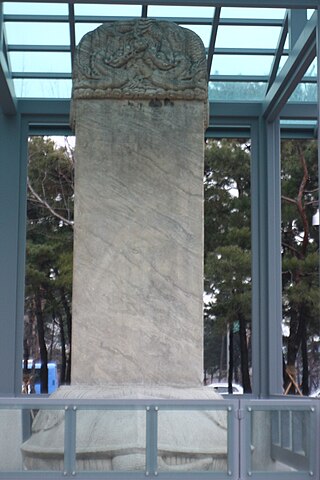
The Samjeondo Monument is a monument marking the submission of the Korean Joseon dynasty to the Manchu-led Qing dynasty in 1636 after the latter's invasion of the former. Its original name was Daecheong Hwangje Gongdeok Bi (大淸皇帝功德碑),which means the stele to the merits and virtues of the Emperor of the Great Qing. Initially erected at Samjeondo,near the Sambatnaru crossing point of the Han River in modern-day Seoul,it was thereafter buried and erected again several times. It is designated as the 101st historic site of South Korea.
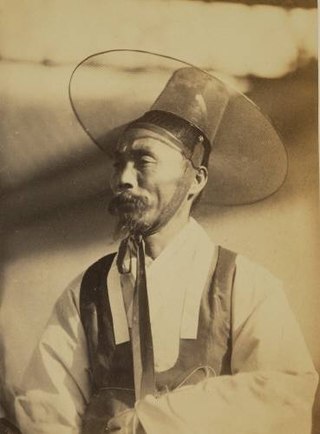
The yangban were part of the traditional ruling class or gentry of dynastic Korea during the Joseon Dynasty. The yangban were mainly composed of highly educated civil servants and military officers—landed or unlanded aristocrats who individually exemplified the Korean Confucian form of a "scholarly official". They were largely government administrators and bureaucrats who oversaw medieval and early modern Korea's traditional agrarian bureaucracy until the end of the dynasty in 1897. In a broader sense,an office holder's family and descendants,as well as country families who claimed such descent,were socially accepted as yangban.

Heunginjimun,more commonly known as Dongdaemun,is one of The Eight Gates of Seoul in the Fortress Wall of Seoul,a prominent landmark in central Seoul,South Korea. The Korean name "Dongdaemun" means "Great East Gate," and it was so named because it was the major eastern gate in the wall that surrounded Seoul during the Joseon Dynasty. The gate is located at Jongno 6-ga in Jongno-gu.

Guri is a city in Gyeonggi Province,South Korea. It is located immediately to the east of Seoul,in the heart of the Capital Metropolitan Area.

Pyeongtaek is a city in Gyeonggi Province,South Korea. Located in the southwestern part of the province,Pyeongtaek was founded as a union of two districts in 1940,during the Goryeo dynasty. It was elevated to city status in 1986 and is home to a South Korean naval base and a large concentration of United States troops. The South Korean government plans to transform Pyeongtaek city to an international economic hub to coincide with the move of the United States Forces Korea (USFK) to Pyeongtaek. During the Korean War,it was the site of an early battle between U.S. and North Korean forces,the Battle of Pyongtaek. It is the location of Pyeongtaek University.

Yeoju is a city in Gyeonggi Province,South Korea. Yeoju was a county but was raised to the status of a city in September 2013. Together with the neighboring city of Icheon,it is known as a major center of contemporary South Korean ceramics,and hosts the World Ceramic Exposition every year. Other local products of note include rice,sweet potatoes,and yellow melons. Yeoju is the birthplace of Korea's last queen,Empress Myeongseong.
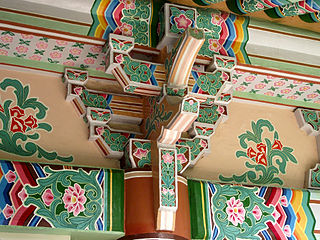
Korean architecture refers to an architectural style that developed over centuries in Korea. Throughout the history of Korea,various kingdoms and royal dynasties have developed a unique style of architecture with influences from Buddhism and Korean Confucianism.
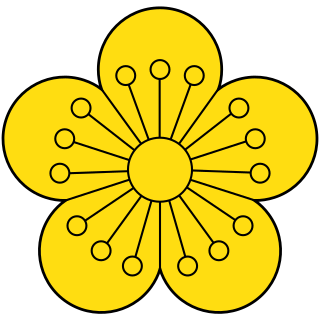
The House of Yi,also called the Yi dynasty,was the royal family of the Joseon dynasty and later the imperial family of the Korean Empire,descended from the Joseon founder Yi Seong-gye. All of his descendants are members of the Jeonju Yi clan.

Throughout the ages,there have been various popular religious traditions practiced on the Korean peninsula. The oldest indigenous religion of Korea is the Korean folk religion,which has been passed down from prehistory to the present. Buddhism was introduced to Korea from China during the Three Kingdoms era in the fourth century,and the religion pervaded the culture until the Joseon Dynasty when Confucianism was established as the state philosophy. During the Late Joseon Dynasty,in the 19th century,Christianity began to gain a foothold in Korea. While both Christianity and Buddhism would play important roles in the resistance to the Japanese occupation of Korea in the first half of the 20th century,only about 4% of Koreans were members of a religious organization in 1940.

Hwaseong Fortress or Suwon Hwaseong is a fortification surrounding the centre of Suwon,the provincial capital of Gyeonggi Province,in South Korea. It was built from 1794 to 1796 by King Jeongjo of the Joseon dynasty to house and honour the remains of his father,Prince Sado. Sado had been executed by being locked alive inside a rice chest by his own father King Yeongjo after failing to obey a command to commit suicide. Located 30 kilometres (19 mi) south of Seoul and enclosing much of central Suwon,the fortress includes King Jeongjo's palace Haenggung. The fortress and enclosed palace were designated as a World Heritage site by UNESCO in 1997. It comprises among many other features the palace,a perimeter wall,four main gates,and two sluicegates over the Suwoncheon,Suwon's main stream,which flows through the centre of the fortress.

Wongaksa Pagoda (Korean: 원각사지십층석탑) is a twelve metre high ten storey marble pagoda in the center of Seoul,South Korea.
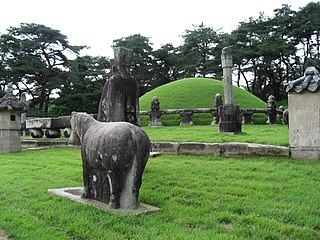
The Tombs of the Joseon dynasty refers to the 40 tombs of members of the House of Yi,which ruled Korea between 1392–1910. These tombs are scattered over 18 locations across the Korean Peninsula. They were built to honor and respect the ancestors and their achievements and assert their royal authority. The tombs have been registered as an UNESCO World Heritage Site since 2009. Two other Joseon tombs,located in Kaesong,North Korea,were proposed but not submitted.
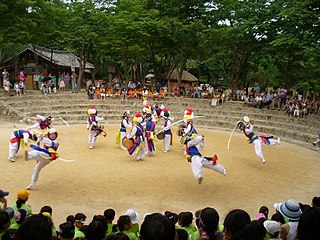
Korean Folk Village (Korean: 한국민속촌) is a living museum type of tourist attraction in the city of Yongin,a satellite city in the Seoul Metropolitan Area in the province of Gyeonggi in South Korea. It was first opened on October 3,1974. Korean Folk Village is a popular tourist destination for both Koreans and foreigners,located near South Korea's largest amusement park,Everland.

Dongmyo Station is a station on the Seoul Subway Line 1 and Line 6. It is named after a nearby shrine,built during the Joseon dynasty to honor Guan Yu,arguably the most famous Chinese military general from the Three Kingdoms era.

Bogwang-dong is a dong (neighbourhood) of Yongsan-gu in Seoul,South Korea.

The Kaesong Namdaemun is the south gate of the old walled city of Kaesong,North Korea. Constructed between 1391 and 1393,it is the only one of the original seven citadel gates to survive mostly intact into the present. Started at the end of the Koryo period in 1391,it was completed three years later under the succeeding Joseon dynasty. It features a stone base topped by a wooden pavilion;however,the pavilion seen today is a 1954 reconstruction as the original was destroyed in 1950 by American bombing during the Korean War. The gate houses the Yŏnbok Bell,cast in 1346 and weighing 14 tonnes. Recovered from Yŏnbok Temple when it was destroyed by fire in 1563,the bell was used to call out the hours until the early 20th century. The gate is National treasure of North Korea no.124.

Surisan (Korean: 수리산) is a mountain separating the cities of Anyang and Gunpo in Gyeonggi Province,South Korea. Surisan is 488 metres (1,601 ft) above sea level (a.s.l.). Surisan is also known as Gyeonbulsan.
Geonbongsa (Korean: 건봉사) is a temple located in Goseong County,Gangwon Province,South Korea.

Gwanghuimun is one of The Eight Gates of Seoul in the Fortress Wall of Seoul,South Korea,which surrounded the city in the Joseon Dynasty. The gate is also known as Namsomun. It was originally called Sugumun.

Seon or Sŏn Buddhism is the Korean name for Chan Buddhism,a branch of Mahāyāna Buddhism commonly known in English as Zen Buddhism. Seon is the Sino-Korean pronunciation of Chan an abbreviation of 禪那(chánnà),which is a Chinese transliteration of the Sanskrit word of dhyāna ("meditation"). Seon Buddhism,represented chiefly by the Jogye and Taego orders,is the most common type of Buddhism found in Korea.


















